-
MyBatis 后端对数据库进行操作
目录
1.MyBatis 是什么?
MyBatis 是⼀款优秀的持久层框架,它⽀持⾃定义 SQL、存储过程以及⾼级映射。MyBatis 去除了很多JDBC 代码以及设置的参数和获取结果集的工作。MyBatis 可以通过简单的 XML 或注解来配置和映射原始类型、接⼝和 Java POJO (Plain Old Java Object。普通老式 Java对象)为数据库中的记录。2. MyBatis 的重要性
对于后端开发来说,程序是由两个重要部分组成的:1.后端程序2.数据库⽽这两个重要的组成部分要通讯,就要依靠数据库连接⼯具1.JDBC2. MyBatisJDBC 的操作流程:
1. 创建数据库连接池 DataSource2. 通过 DataSource 获取数据库连接 Connection3. 编写要执⾏带 ? 占位符的 SQL 语句4. 通过 Connection 及 SQL 创建操作命令对象 Statement5. 替换占位符:指定要替换的数据库字段类型,占位符索引及要替换的值6. 使⽤ Statement 执⾏ SQL 语句7. 查询操作:返回结果集 ResultSet,更新操作:返回更新的数量8. 处理结果集9. 释放资源对于 JDBC 来说,整个操作⾮常的繁琐,我们不但要拼接每⼀个参数,⽽且还要按照模板代码的⽅式,⼀步步的操作数据库,并且在每次操作完,还要⼿动关闭连接等,⽽所有的这些操作步骤都需要在每个⽅法中重复书写。对于 MyBatis ,它可以帮助我们更⽅便、更快速的操作数据库。3. MyBatis 查询
框架交互流程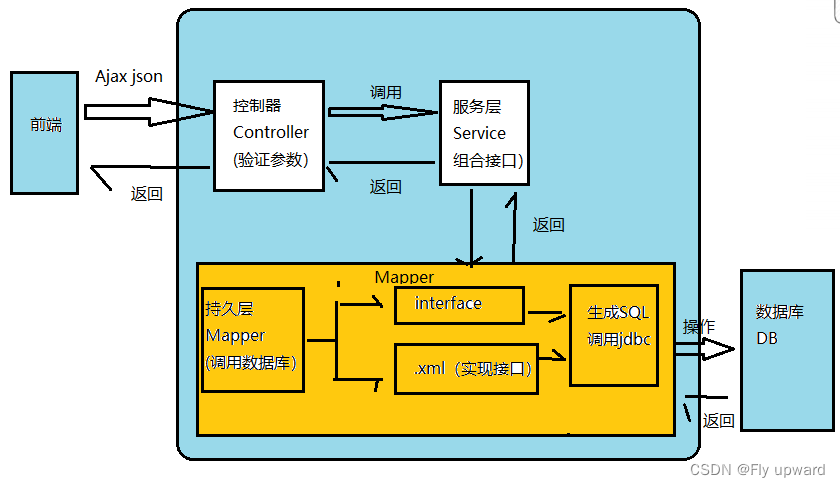 MyBatis 也是⼀个 ORM 框架, ORM(Object Relational Mapping),即对象关系映射。在⾯向对象编程语⾔中,将关系型数据库中的数据与对象建⽴起映射关系,进⽽⾃动的完成数据与对象的互相转换:1. 将输⼊数据(即传⼊对象)+SQL 映射成原⽣ SQL2. 将结果集映射为返回对象,即输出对象ORM 把数据库映射为对象:数据库表(table)--> 类(class)记录(record,⾏数据)--> 对象(object)字段(field) --> 对象的属性(attribute)
MyBatis 也是⼀个 ORM 框架, ORM(Object Relational Mapping),即对象关系映射。在⾯向对象编程语⾔中,将关系型数据库中的数据与对象建⽴起映射关系,进⽽⾃动的完成数据与对象的互相转换:1. 将输⼊数据(即传⼊对象)+SQL 映射成原⽣ SQL2. 将结果集映射为返回对象,即输出对象ORM 把数据库映射为对象:数据库表(table)--> 类(class)记录(record,⾏数据)--> 对象(object)字段(field) --> 对象的属性(attribute)⼀般的 ORM 框架,会将数据库模型的每张表都映射为⼀个 Java 类。 也就是说使⽤ MyBatis 可以像操作对象⼀样来操作数据库中的表,可以实现对象和数据库表之间的转换。
3.1 创建数据库和表
使⽤ MyBatis 的⽅式来读取⽤户表中的所有⽤户
创建用户表
- drop table if exists userinfo;
- create table userinfo(
- id int primary key auto_increment,
- username varchar(100) not null,
- password varchar(32) not null,
- photo varchar(500) default '',
- createtime datetime default now(),
- updatetime datetime default now(),
- `state` int default 1
- ) default charset 'utf8mb4';

3.2 添加MyBatis框架⽀持
3.2.1 新项目添加MyBatis
在创建新项目时,来到这一步,只需将下面的勾选即可

3.2.1 老项⽬添加 MyBatis
在 pom.xml 文件页面 鼠标右键进行下面操作
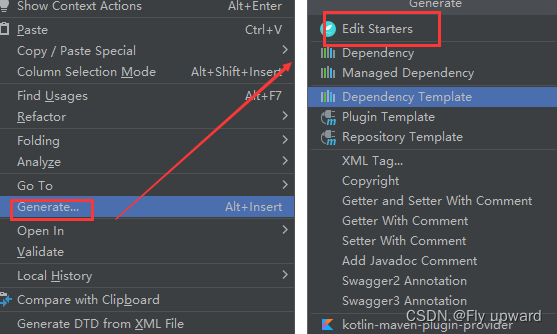

3.3 配置连接字符串和MyBatis
3.3.1 配置连接字符串
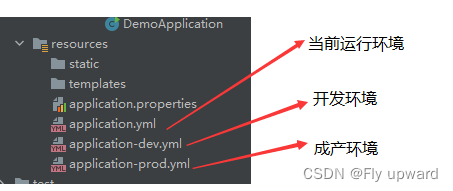
将当前运行环境选择开发环境的配置
application-dev.yml
- #开发环境
- #配置数据库连接
- spring:
- datasource:
- url: jdbc:mysql://127.0.0.1:3306/myblog?characterEncoding=utf8
- username: root
- password: 123456
- driver-class-name: com.mysql.cj.jdbc.Driver
- # 开启 MyBatis SQL 打印
- logging:
- level:
- com:
- example:
- demo: debug
- mybatis:
- configuration:
- log-impl: org.apache.ibatis.logging.stdout.StdOutImpl
application.yml
选择开发环境
- spring:
- profiles:
- active: dev
3.3.2 配置mybatis 中的 xml 保存路径
MyBatis 的 XML 中保存是查询数据库的具体操作 SQL,配置在 application.yml 中下⾯按照后端开发的⼯程思路,也就是下⾯的流程来实现 MyBatis 查询所有⽤户的功能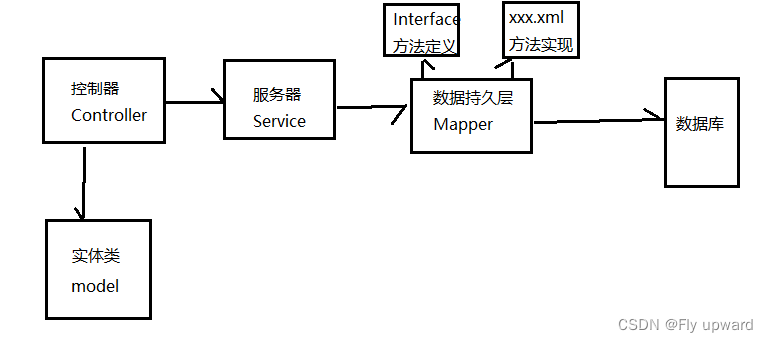
目录结构:
3.4.1 添加实体类
先添加用户实体类
- /**
- * 普通用户实体类
- */
- @Data
- public class UserInfo {
- private Integer id;
- private String name;
- private String password;
- private String photo;
- private String createtime;
- private String updatetime;
- private int state;
- }
3.4.2 添加 mapper 接口
数据持久层的接口定义:
- /**
- * 实现数据库映射
- */
- @Mapper
- public interface UserMapper {
- //查询用户 ID
- public UserInfo getUserById(@Param("id") Integer id);
- }
3.4.3 添加UserMapper.xml
数据持久层的实现,mybatis 的固定 xml 格式
- "1.0" encoding="UTF-8"?>
- mapper PUBLIC "-//mybatis.org//DTD Mapper 3.0//EN" "http://mybatis.org/dtd/mybatis-3-mapper.dtd">
- <mapper namespace="com.example.demo.mapper.UserMapper">
- mapper>
UserMapper.xml 查询所有⽤户的具体实现 SQL:- "1.0" encoding="UTF-8"?>
- mapper PUBLIC "-//mybatis.org//DTD Mapper 3.0//EN" "http://mybatis.org/dtd/mybatis-3-mapper.dtd">
- <mapper namespace="com.example.demo.mapper.UserMapper">
- <resultMap id="BaseMap" type="com.example.demo.model.UserInfo">
- <id column="id" property="id">id>
- <result column="username" property="name">result>
- resultMap>
- <select id="getUserById" resultMap="BaseMap">
- select * from userinfo where id=${id}
- select>
- mapper>
标签说明:
标签:需要指定 namespace 属性,表示命名空间,值为 mapper 接⼝的全限定 名,包括全包名.类名。id:是和 Interface(接⼝)中定义的⽅法名称⼀样的,表示对接⼝的具体实现⽅法。resultType:是返回的数据类型,也就是开头我们定义的实体类
3.4.4 添加Service
决定调用哪个mapper
- @Service
- public class UserService {
- @Resource
- private UserMapper userMapper;
- public UserInfo getUserById(Integer id) {
- return userMapper.getUserById(id);
- }
- }
3.4.5 添加 Controller
- @Controller
- @ResponseBody
- @RequestMapping("/user")
- public class UserController {
- @Autowired
- private UserService userService;
- @RequestMapping("/getuserbyid")
- public UserInfo getUserById(Integer id) {
- if (id == null) return null;
- return userService.getUserById(id);
- }
- }
以上代码写完,整个 MyBatis 的查询功能就实现完了
4.增删改操作
4.1 修改用户操作
在 UserMapper 中增加修改的代码
- //修改方法根据 ID 修改名称
- public int update(@Param("id") Integer id,
- @Param("name") String username);
UserMapper.xml 中增加接口的实现标签和具体的执行SQL
- <update id="update" >
- update userinfo set username=#{name} where id=#{id}
- update>

通过单元测试,实现成功
- @Test
- void update() {
- int result = userMapper.update(2,"fei");
- Assertions.assertEquals(1,result);
- }

查询SQL语句可知,已经修改了
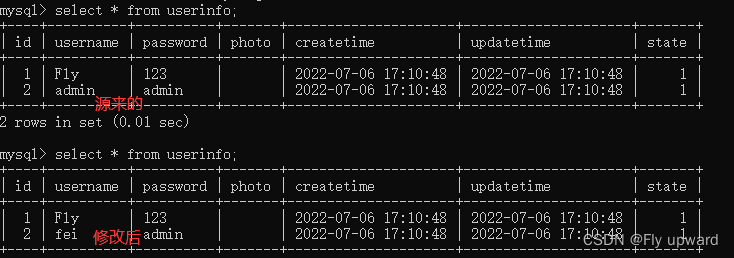
如果仅仅是为了测试功能是否实现,而不修改数据库中的内容,可以加入注解 @Transactional
- @Test
- @Transactional // 添加此注解后,执行完单元测试,不会修改数据库中的内容,即事务回滚
- void update() {
- int result = userMapper.update(2,"fei");
- Assertions.assertEquals(1,result);
- }
4.2 删除用户操作
在 UserMapper 中增加删除的代码
- //删除方法
- public int del(@Param("id") Integer id);
UserMapper.xml 中增加接口的实现标签和具体的执行SQL
"del"> - delete from userinfo where id=#{id};
单元测试
- @Test
- @Transactional
- void del() {
- int result = userMapper.del(2);
- System.out.println("删除行数: " + result);
- Assertions.assertEquals(1,result);
- }

4.3 增加用户操作
在 UserMapper 中添加增加的代码
- //增加用户方法
- // 传过来的是对象而不是某个成员变量
- public int add(UserInfo userInfo);
UserMapper.xml 中增加接口的实现标签和具体的执行SQL
- <insert id="add">
- insert into userinfo(username,password,photo)
- values(#{username}, #{password}, #{photo});
- insert>
单元测试
- @Test
- //@Transactional
- void add() {
- UserInfo userInfo = new UserInfo();
- userInfo.setName("y");
- userInfo.setPassword("123");
- userInfo.setPhoto("");
- System.out.println("添加之前的 id: " + userInfo.getId());
- int result = userMapper.add(userInfo);
- System.out.println("添加之后的 id: " + userInfo.getId());
- System.out.println("添加的行数: " + result);
- Assertions.assertEquals(1,result);
- }

4.4 增加用户并有自增ID
在 UserMapper 中添加增加的代码
- //添加用户,返回自增ID
- public int addGetId(UserInfo userInfo);
UserMapper.xml 中增加接口的实现标签和具体的执行SQL
- <insert id="addGetId" useGeneratedKeys="true" keyProperty="id" keyColumn="id">
- insert into userinfo(username,password,photo)
- values(#{name}, #{password}, #{photo});
- insert>
单元测试
- @Test
- //@Transactional
- void addGetId() {
- UserInfo userInfo = new UserInfo();
- userInfo.setName("yang");
- userInfo.setPassword("123");
- userInfo.setPhoto("");
- System.out.println("添加之前的 id: " + userInfo.getId());
- int result = userMapper.addGetId(userInfo);
- System.out.println("添加之后的 id: " + userInfo.getId());
- System.out.println("添加的行数: " + result);
- Assertions.assertEquals(1,result);
- }


5. 参数占位符 #{} 和 ${}
#{}:预编译处理 。处理时,成一个 问号? ,赋值时会加上 单引号 ‘ ’
${}:字符直接替换
区别:
1.定义不同预编译处理是指:MyBatis 在处理#{}时,会将 SQL 中的 #{} 替换为?号,使⽤ PreparedStatement 的set ⽅法来赋值。直接替换:是MyBatis 在处理 ${} 时,就是把 ${} 替换成变量的值。2.使用不同:#{} 适用于所有类型的参数匹配,但${} 只适用于数值类型3.安全性不同:#{} 性能高,并且没有安全问题;但 ${} 存在SQL注入的安全问题#{}:预编译处理占位符,当成 value 值来使用, 即加上 ‘ ’- <select id="gerUserFullById" resultType="com.example.demo.model.UserInfo">
- select * from userinfo where username=#{name}
- select>
- @Test
- void gerUserFullById() {
- UserInfo userInfo = userMapper.gerUserFullById("fei");
- System.out.println("userInfo: " + userInfo);
- }

${}:字符直接替换
不加任何符合,直接替换上去,连成一个SQL 命令
- <select id="gerUserFullById" resultType="com.example.demo.model.UserInfo">
- select * from userinfo where username=${name}
- select>
单元测试结果

5.1 desc 降序排序
- //对用户进行排序
- public List
getOrderList(@Param("order") String order);
此处使用的是 ${}, 如果使用 #{} 的话,会编译出错,因为它会把 desc 当成 ‘desc’ 一个value 值来使用,不构成一个 SQL命令语句
- <select id="getOrderList" resultType="com.example.demo.model.UserInfo">
- select * from userinfo order by createtime ${order}
- select>
单元测试
- @Test
- void getOrderList() {
- List
list = userMapper.getOrderList("desc"); - log.info("列表: " + list);
- }


5.2 登录(SQL注入)
- //登录功能
- public UserInfo login(@Param("name") String username,
- @Param("password") String password);
1) 在使用${} 时,需要加单引号,因为是直接替换
- <select id="login" resultType="com.example.demo.model.UserInfo">
- select * from userinfo where username='${name}' and password='${password}';
- select>
单元测试
- @Test
- void login() {
- String username = "Fly";
- String password = "";
- UserInfo userInfo = userMapper.login(username,password);
- log.info("用户信息: " + userInfo);
- }

使用 " 'or 1=' 1" 时,SQL注入,密码会泄露,如下,因此在登录时应使用#{}
- @Test
- void login() {
- String username = "Fly";
- //String password = "";
- String password = "'or 1='1";
- UserInfo userInfo = userMapper.login(username,password);
- log.info("用户信息: " + userInfo);
- }

2)#{} 预编译处理,不会出现密码泄露
- <select id="login" resultType="com.example.demo.model.UserInfo">
- select * from userinfo where username=#{name} and password=#{password};
- select>

5.3 like 查询
- //like 模糊查询
- public List
getUserByName(@Param("name") String username);
1)直接使用 #{} 会报错
因为赋值时会加上单引号 ‘’
select * from userinfo where username like '%#{name}%'就相当于下面的语句,不符合查询条件
select * from userinfo where username like '%'name'%'2)使用${} 是不会报错,但在业务层的值不能穷举
3)#{} 在like中的正确用法,加上contat 拼接,演示如下

正确用法
因为#{} 在赋值的时候,会带上单引号‘’ ,所以下面的#{}不需要带单引号
- <select id="getUserByName" resultType="com.example.demo.model.UserInfo">
- select * from userinfo where username like concat('%',#{name},'%')
- select>
单元测试
- @Test
- void getUserByName() {
- String username = "l";
- List
list= userMapper.getUserByName(username); - log.info("用户列表: " + list);
- }

6.多表查询
6.1 返回类型:resultType
绝大数查询场景可以使用 resultType 进行返回,如下
- <select id="getUserById" resultType="com.example.demo.model.UserInfo">
- select * from userinfo where id=${id}
- select>
它的优点是使⽤⽅便,直接定义到某个实体类即可6.2 返回字典映射:resultMap
使用场景:字段名称和程序中的属性名不同的情况, 可使⽤ resultMap 配置映射;一对一和一对多关系可以使用 resultMap 映射并查询数据1)字段名程序中的属性名不一致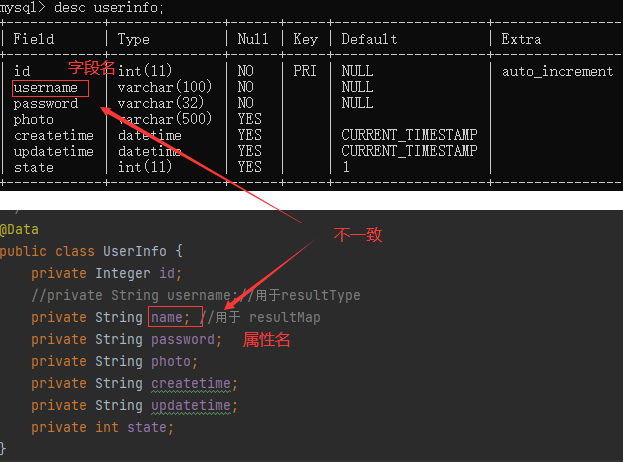
userMapper.xml 代码如下
- <select id="getUserById" resultType="com.example.demo.model.UserInfo">
- select * from userinfo where id=${id}
- select>
查询结果
 这个时候就可以使⽤ resultMap 了,resultMap 的使⽤如下
这个时候就可以使⽤ resultMap 了,resultMap 的使⽤如下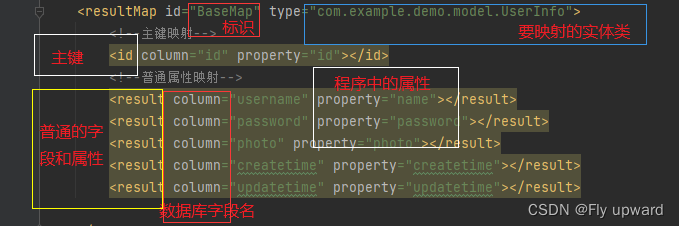
userMapper.xml 代码如下
- <resultMap id="BaseMap" type="com.example.demo.model.UserInfo">
- <id column="id" property="id">id>
- <result column="username" property="name">result>
- <result column="password" property="password">result>
- <result column="photo" property="photo">result>
- <result column="createtime" property="createtime">result>
- <result column="updatetime" property="updatetime">result>
- resultMap>
- <select id="getUserById" resultMap="BaseMap">
- select * from userinfo where id=${id}
- select>
单元测试- @Test
- void getUserById() {
- UserInfo userInfo = userMapper.getUserById(1);
- //Assertions.assertNotNull(userInfo);
- log.info("查询行数:" + userInfo);
- }
查询结果

6.3 一对一表查询
创建文章实体类 ArticleInfo
- @Data
- public class ArticleInfo {
- private int id;
- private String title;
- private String content;
- private String createtime;
- private String updatetime;
- private int uid;
- private int rcount;
- private int state;
- private UserInfo userInfo;
- }
mapper 实现数据库映射 ArticleMapper
- @Mapper
- public interface ArticleMapper {
- //根据文章 id 获取文章
- public ArticleInfo getArticleById(@Param("id") Integer id); //文章id
- }
数据库命令,数据持久层的实现, ArticleMapper.xml
- <mapper namespace="com.example.demo.mapper.ArticleMapper">
- <resultMap id="BaseMap" type="com.example.demo.model.ArticleInfo">
- <id column="id" property="id">id>
- <result column="title" property="title">result>
- <result column="content" property="content">result>
- <result column="createtime" property="createtime">result>
- <result column="uid" property="uid">result>
- <result column="rcount" property="rcount">result>
- <result column="state" property="state">result>
- <association property="userInfo"
- resultMap="com.example.demo.mapper.UserMapper.BaseMap"
- columnPrefix="u_">association>
- resultMap>
- <select id="getArticleById" resultMap="BaseMap">
- select a.*,u.* from articleinfo a left join userinfo u on a.uid=u.id
- select>
- mapper>
以上使⽤标签,表示⼀对⼀的结果映射: property 属性:指定 Article 中对应的属性,即⽤户。resultMap 属性:指定关联的结果集映射,将基于该映射配置来组织⽤户数据。columnPrefix 属性:绑定⼀对⼀对象时,因为对应的是用户表 ,所以是“u-”是通过 columnPrefix+association.resultMap.column 来映射结果集字段。 association.resultMap.column是指标签中 resultMap属性,对应的结果集映射中,column字段 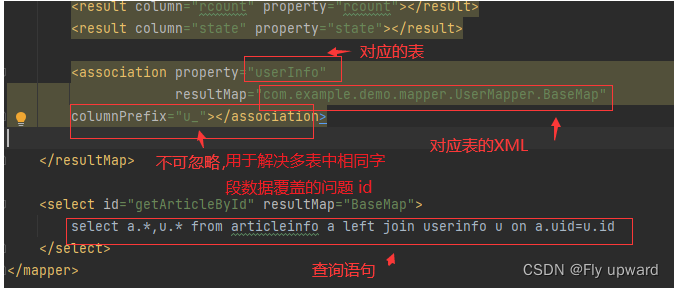
单元测试
- //将类属性注入
- @Resource
- private ArticleMapper articleMapper;
- @Test
- void getArticleById() {
- ArticleInfo articleInfo = articleMapper.getArticleById(1);
- log.info("查询结果:" + articleInfo );
- }
查询结果

6.4 一对多
一个用户对应多篇文章
实体类
- @Data
- public class UserInfo {
- private Integer id;
- //private String username;//用于resultType
- private String name; //用于 resultMap
- private String password;
- private String photo;
- private String createtime;
- private String updatetime;
- private int state;
- //一对多
- private List
artlist; - }
mapper
- //一对多,多表查询
- //根据用户 id 查询用户及用户发表的所有文章
- public UserInfo getUserAndArticleByUid(@Param("uid") Integer uid);
XML
- <resultMap id="BaseMap" type="com.example.demo.model.UserInfo">
- <id column="id" property="id">id>
- <result column="username" property="name">result>
- <result column="password" property="password">result>
- <result column="photo" property="photo">result>
- <result column="createtime" property="createtime">result>
- <result column="updatetime" property="updatetime">result>
- <result column="state" property="state">result>
- <collection property="artlist"
- resultMap="com.example.demo.mapper.ArticleMapper.BaseMap"
- columnPrefix="a_">
- collection>
- resultMap>
- <select id="getUserAndArticleByUid" resultMap="BaseMap">
- select u.*,a.id a_id,a.title a_title,a.content a_content,
- a.createtime a_createtime,
- a.updatetime a_updatetime from userinfo u left join articleinfo a
- on u.id=a.uid where u.id=#{uid}
- select>
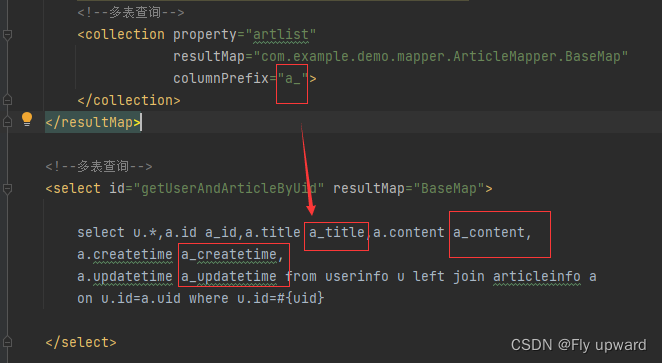
单元测试
- @Test
- void getUserAndArticleByUid() {
- UserInfo userInfo = userMapper.getUserAndArticleByUid(1);
- log.info("用户详情:" + userInfo);
- }
7.动态SQL使用
动态SQL是mybatis 的强大特性之一,能够完成不同条件的SQL拼接
7.1
标签 在填写个人信息时,会经常遇到一些必填项,一些非必填项,如下
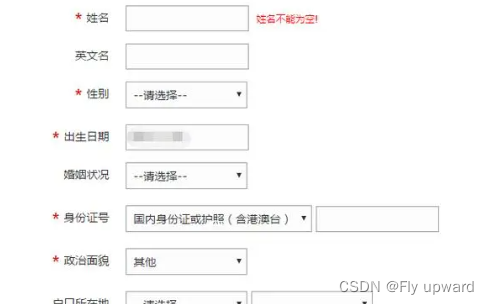 注册分为两种字段:必填字段和⾮必填字段,那如果在添加⽤户的时候有不确定的字段传⼊,程序应该如何实现呢?这个时候就需要使⽤动态标签
注册分为两种字段:必填字段和⾮必填字段,那如果在添加⽤户的时候有不确定的字段传⼊,程序应该如何实现呢?这个时候就需要使⽤动态标签来判断了: 判断一个参数是否有值,如果没值,就会隐藏 if 中的SQL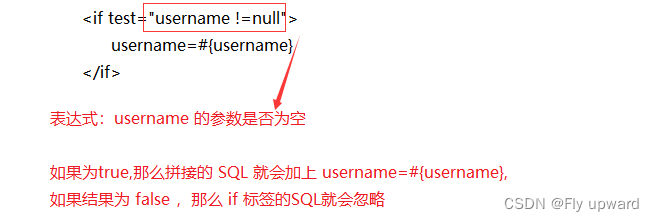
现在有一张用户表
在新增用户的时候,将 photo 设为非比传参数

1)传入photo 时
mapper
- //动态SQL,添加用户,photo为非必传参数
- public int add2(UserInfo userInfo);
UserMapper.xml
- <insert id="add2">
- insert into userinfo(username,password
- <if test="photo !=null">
- ,photo
- if>
- ) values(#{name}, #{password}
- <if test="photo !=null">
- , #{photo}
- if>
- )
- insert>
注意 test 中的 photo 和 #{},是传⼊对象中的属性,不是数据库字段
单元测试
- @Test
- void add2() {
- UserInfo userInfo = new UserInfo();
- userInfo.setName("杨通");
- userInfo.setPassword("123");
- userInfo.setPhoto("123.jpg");
- int result = userMapper.add2(userInfo);
- log.info("添加用户:" + result);
- }
添加结果


2)不传入 photo 时
不用像没使用动态SQL时,将 userInfo.setPhoto(""); 设为空,直接忽略不写就行了
- @Test
- void add2() {
- UserInfo userInfo = new UserInfo();
- userInfo.setName("黄空");
- userInfo.setPassword("123");
- //userInfo.setPhoto("123.jpg");
- int result = userMapper.add2(userInfo);
- log.info("添加用户:" + result);
- }
动态SQL直接忽略photo,添加成功


7.2
标签 最主要的作用:去除SQL语句前后多余的某个字符
语法:
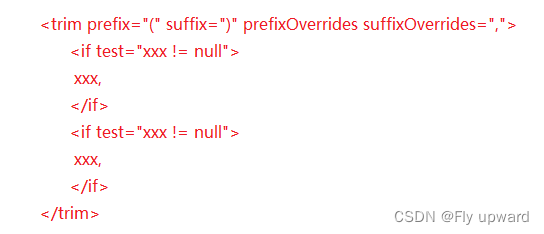
标签中有如下属性: prefix: 表示这个语句快,以prefix的值作为前缀suffix:表示整个语句块,以suffix的值作为后缀prefixOverrides:表示整个语句块要去除掉的前缀suffixOverrides:表示整个语句块要去除掉的后缀UserMapper
- //动态SQL,
标签。添加用户,photo为非必传参数 - public int add3(UserInfo userInfo);
UserMapper.xml
- <insert id="add3">
- insert into userinfo
- <trim prefix="(" suffix=")" suffixOverrides=",">
- <if test="name != null">
- username,
- if>
- <if test="password != null">
- password,
- if>
- <if test="photo != null">
- photo
- if>
- trim>
- values
- <trim prefix="(" suffix=")" suffixOverrides=",">
- <if test="name != null">
- #{name},
- if>
- <if test="password != null">
- #{password},
- if>
- <if test="photo != null">
- #{photo}
- if>
- trim>
- insert>
单元测试
这里不传photo,看拼接的字段前的一个逗号是否还在
- @Test
- void add3() {
- UserInfo userInfo = new UserInfo();
- userInfo.setName("黄小小");
- userInfo.setPassword("123");
- //userInfo.setPhoto("123.jpg"); 这里不传,看拼接的字段前的一个逗号是否还在
- int result = userMapper.add2(userInfo);
- log.info("添加用户:" + result);
- }


7.3
标签 主要作用:实现查询中的 where SQL替换,它可以实现如果没有任何的查询条件,那么他可以因此查询中的 where SQL ,但如果存在查询中条件,那么会生成where的 SQL查询,并且使用 where 标签可以自动的去除最后一个 and字符。
1)SQL 替换
根据 id 查询用户:
- <select id="getUserById" resultMap="BaseMap">
- select * from userinfo
- <where>
- <if test="id != null">
- id=#{id}
- if>
- where>
- select>

当传入的 id 为 null 时
- @Test
- void getUserById() {
- UserInfo userInfo = userMapper.getUserById(null);
- //Assertions.assertNotNull(userInfo);
- log.info("查询行数:" + userInfo);
- }

2)去除 and

或者通过 id 或者 username 来查询时,如果username 为空就会去掉
7.4
标签 作用:进行修改操作是,配合 if 来处理非必传字段,他的特点是主动去除最后一个英文逗号
语法:
- update table_name
- <set>
- <if test="xxx">
- ...
- if>
- ...
- set>
- where ...
1)修改用户名
UserMapper
- //动态SQL,
标签。修改用户 - public int update2(UserInfo userInfo);
UserMapper.xml
- <update id="update2">
- update userinfo
- <set>
- <if test="name != null">
- username=#{name},
- if>
- <if test="password != null">
- password = #{password},
- if>
- <if test="photo != null">
- photo = #{photo}
- if>
- set>
- update>
单元测试
- @Test
- void update2() {
- UserInfo userInfo = new UserInfo();
- userInfo.setId(1); //查找 id 为 1 的用户
- userInfo.setName("fei"); // 将用户名修改为 fei
- int result = userMapper.update2(userInfo);
- log.info("修改结果: " + result);
- }


7.5
标签 对集合进⾏遍历时可以使⽤该标签。标签有如下属性: collection: 绑定方法参数中的集合,如List 、Set、Map或数组对象item: 遍历时的每一个对象open:语句块开头的字符串close:语句块结束的字符串separator:每次遍历之间间隔的字符串示例:根据用户 id 来对用户进行删除
UserMapper
- //动态SQL,
,删除多个用户 - public int delId(List
ids) ;
UserMapper.xml
- <delete id="delId">
- delete from userinfo where id in
- <foreach collection="ids" open="(" close=")" item="id" separator=",">
- #{id}
- foreach>
- delete>
单元测试
- @Test
- void delId() {
- List
list = new ArrayList<>(); - list.add(2);
- list.add(3);
- list.add(4);
- int result = userMapper.delId(list);
- log.info("删除的行数:" + result);
- }
结果

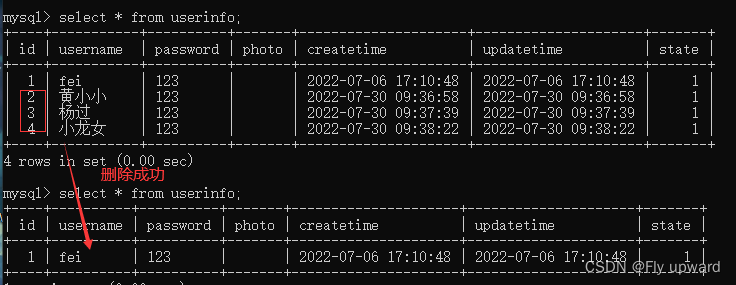
-
相关阅读:
SCS【5】单细胞转录组数据可视化分析 (scater)
我为什么要使用GPT????
【云原生】Kubernetes临时容器
化妆品展示网页设计作业 静态HTML化妆品网站 DW美妆网站模板下载 大学生简单网页作品代码 个人网页制作 学生个人网页设计作业
scapy sniff与command方法
TCP通讯程序的编写
【Python】环境管理Pipenv
Python编程:使用PIL进行JPEG图像压缩的简易教程
基于Java+SpringBoot+mybatis+vue+element实现旅游管理系统
SaaSBase:Automation Anywhere是什么?
- 原文地址:https://blog.csdn.net/m0_60494863/article/details/125955903
